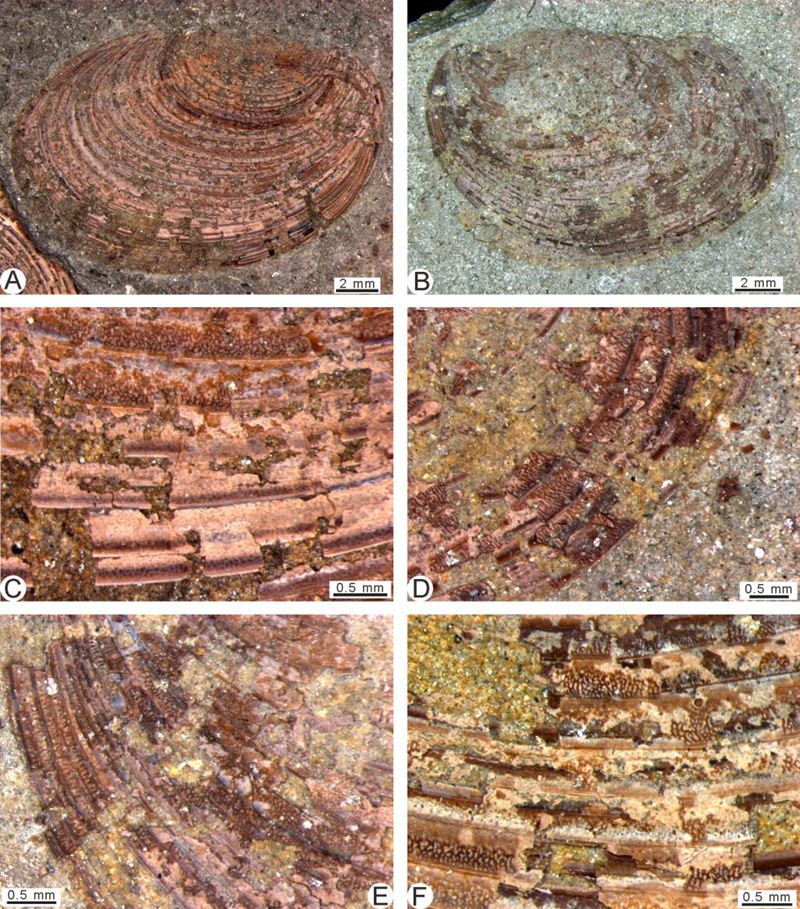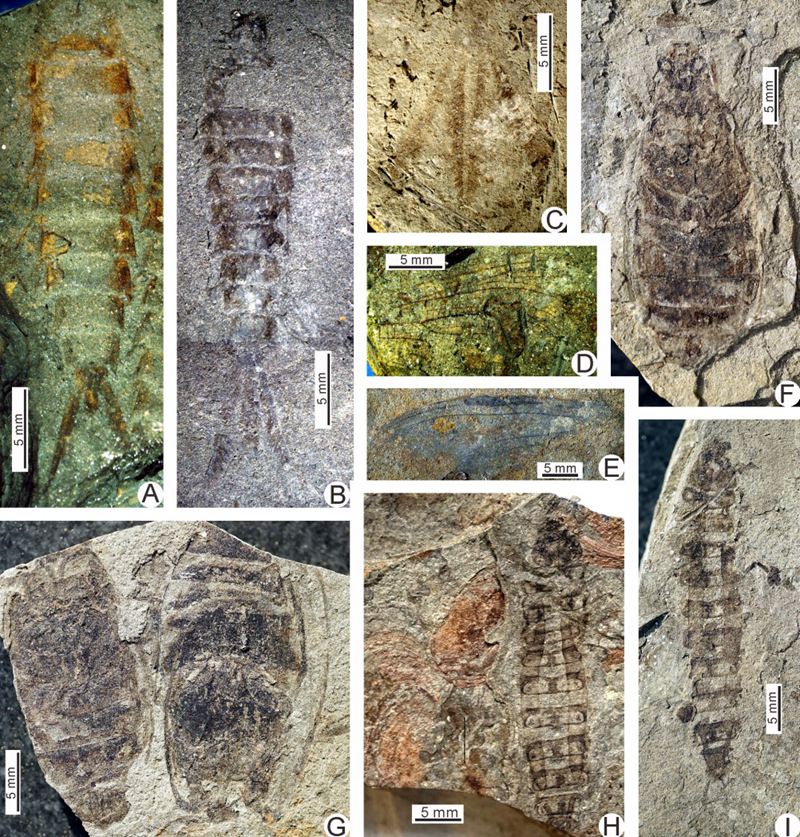
Conchostracans Eosestheria sp. from the middle Upper Member of Bayingebi Formation in the Celaomiao region, western Inner Monglia, China.
When Laurasia began to break up in the Early Cretaceous, the freshwater and terrestrial Jehol Biota appeared and was widely distributed in eastern Eurasia. As the earliest biota of the Modern Biosphere represented by thriving angiosperms, birds, and mammals, it is generally divided into three stages: the early, the middle, and the late Jehol Biota. They have different biological characters and geographical distributions. In northern Hebei and western Liaoning provinces, the major distribution areas of the Jehol Biota, the Jehol Group (strata bearing the Jehol Biota) has been well studied. The early Jehol Biota is recorded from the Dabeigou Formation and its coeval horizons, the middle Jehol Biota from the Yixian Formation and the late Jehol Biota from the Jiufotang Formation and their respectively coeval strata.
Recent investigation conducted by the group led by Professor ZHANG Haichun from Nanjing Institute of Geology and Palaeontology, Chinese Academy of Sciences cooperated with colleagues from University of Hong Kong and China University of Petroleum, reports some typical components of the Jehol Biota for the first time from the Bayingebi Formation in the Celaomiao region, western Inner Mongolia, China, including conchostracans Eosestheria sp., the mayfly Ephemeropsis trisetalis Eichwald, 1864, the aquatic beetle Coptoclava longipoda Ping, 1928, and a fragmentary dragonfly. This discovery indicates that the middle Upper Member of Bayingebi Formation can be correlated with the upper Yixian and the lower Jiufotang formations in western Liaoning Province. Combining it with the radio-isotopic dating result, they further indicate that the Upper Member of Bayingebi Formation could be roughly correlated with the Yixian, Jiufotang, and Shahai formations, and the overlying Suhongtu Formation with the Fuxin Formation in western Liaoning Province.

Fossil insects from the middle Upper Member of Bayingebi Formation in the Celaomiao region, western Inner Mongolia, China.
In the major Bayingebi Basin, palaeontological and radio-isotopic dating evidence shows that the Bayingebi Formation has a long depositional history of over 30 Ma: its Upper Member bearing the Jehol Biota and the early Fuxin Biota is probably coeval to the Yixian, Jiufotang and Shahai formations and has a Barremian–early Albian age; its Lower Member may be Berriasian–Hauterivian in age and could be correlated with the upper Tuchengzi, Zhangjiakou, and Dabeigou formations in northern Hebei Province. This suggests that the Bayingebi Formation should be promoted to the stratigraphic rank of group and subdivided into several secondary units (formations). Unlike the previous result, the Yingen Formation is considered across the Lower Cretaceous–Upper Cretaceous boundary and being late Albian–early Turonian in age.
Related information: Li, S., Zheng, D.R., Zhang, Q., Liao, H.Y., Wang, H., Wang, B., Wang J., Lu, H.B., Chang, S.C., Zhang, H.C.*, 2016. Discovery of the Jehol Biota from the Celaomiao region and discussion of the Lower Cretaceous of the Bayingebi Basin, northwestern China.Palaeoworld,25: 76-83.
